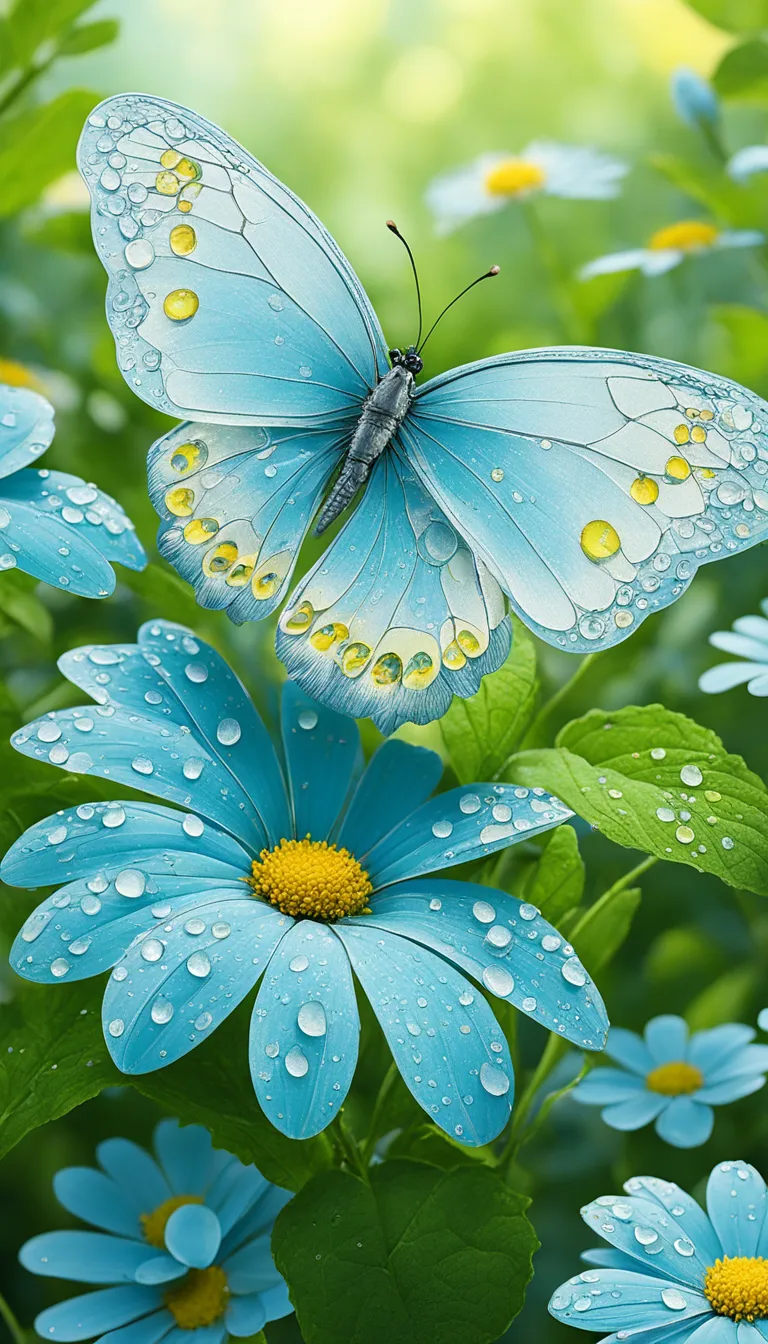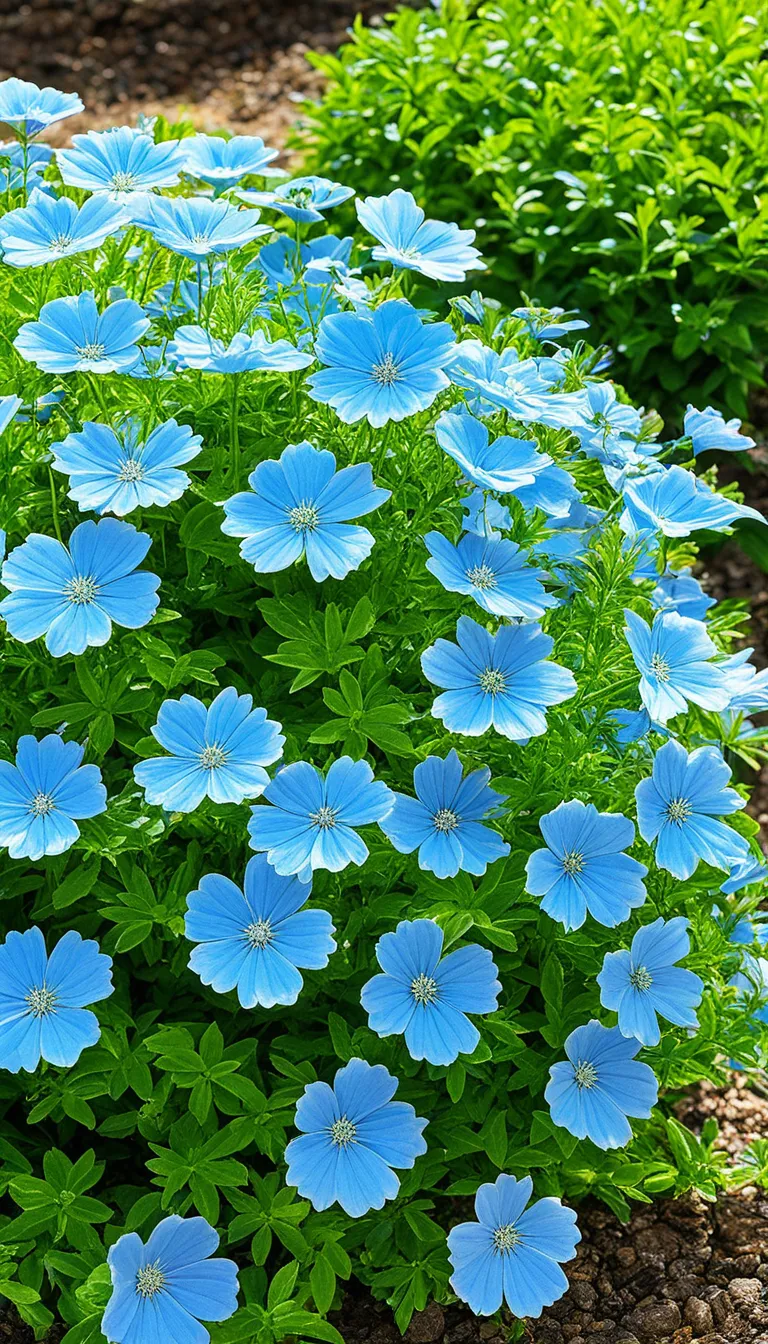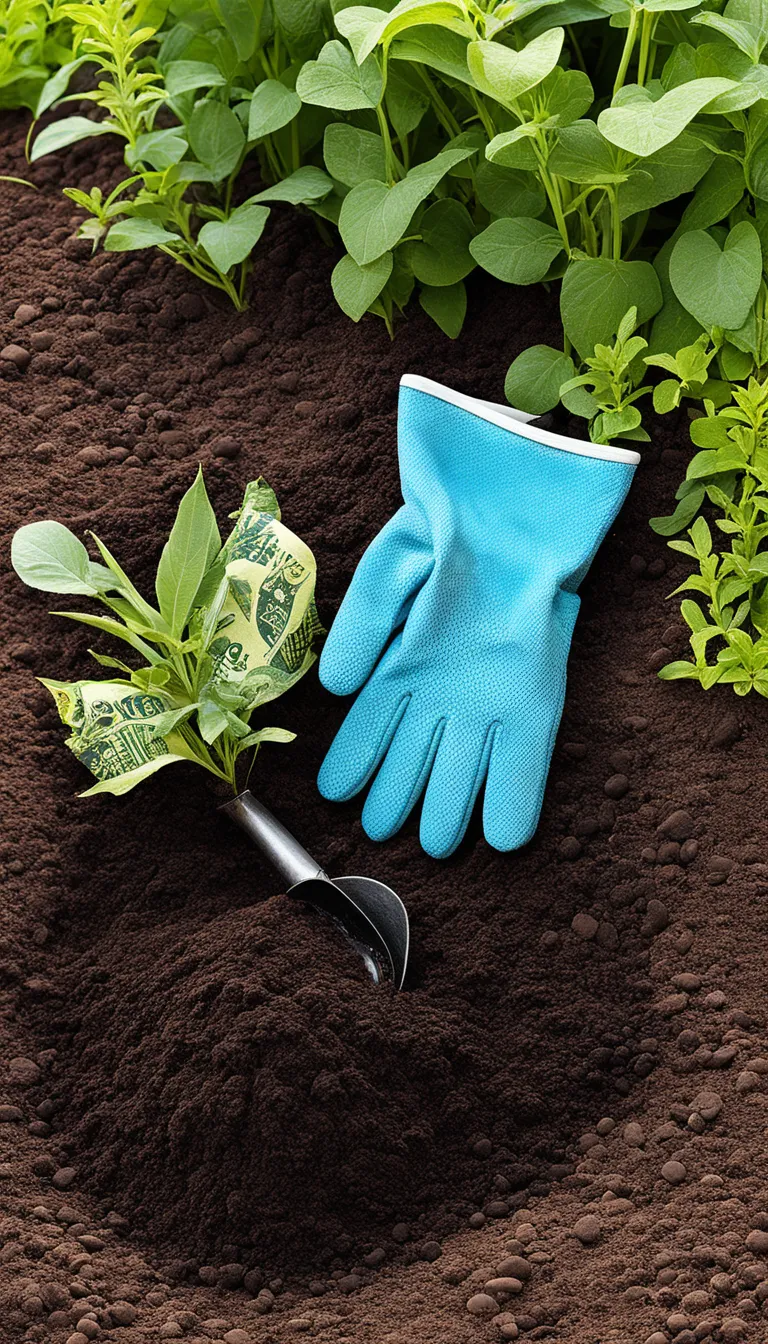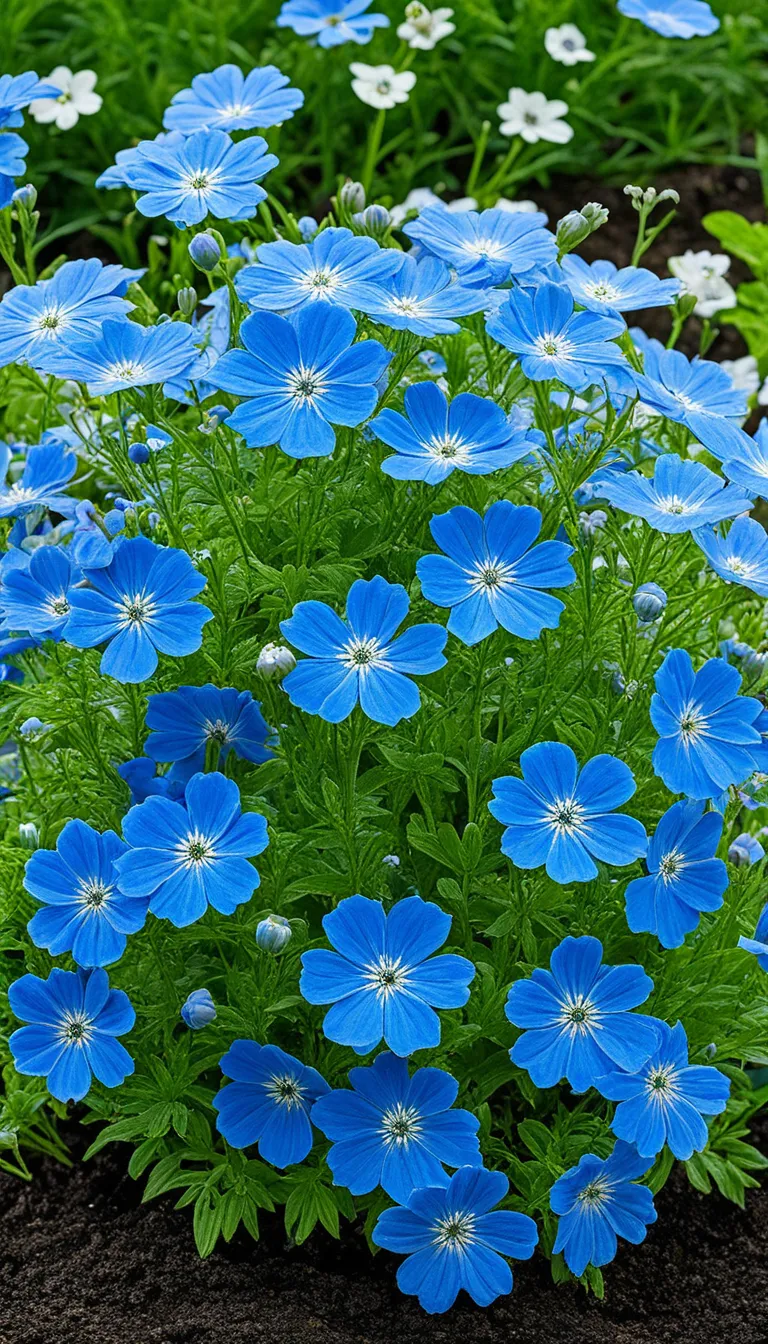Discover the charming world of Baby Blue Eyes, a delightful flower known for its vibrant blue petals and easy-care nature. With a name as gentle as its appearance, Baby Blue Eyes (Nemophila menziesii) are a true spectacle in any garden. These blooms aren’t just a treat for the eyes; they’re also a symbol of serenity and tranquility, making them a perfect addition to spaces where you want to create a peaceful retreat.
Originating in California, Baby Blue Eyes have spread their allure far and wide, capturing the hearts of gardeners and nature enthusiasts alike. The flower’s distinctive blue hue is reminiscent of a clear sky, bringing a sense of openness and wonder to any landscape. But it’s not just their color that’s noteworthy; these flowers have a resilience that belies their delicate appearance, thriving in a variety of conditions with minimal fuss.
Whether you’re a seasoned gardener or a beginner looking to add some color to your outdoor space, Baby Blue Eyes are a fantastic choice. They’re particularly favored for their low maintenance and ability to attract beneficial pollinators like bees and butterflies. Here’s a quick rundown on why these flowers are a must-have:
- Striking Color: The luminous blue petals are edged with white, creating a stunning contrast.
- Easy to Grow: They are tolerant to different soil types and don’t require constant care.
- Pollinator-Friendly: Attract bees and butterflies, promoting a healthy garden ecosystem.
- Versatile: Perfect for borders, containers, or as a part of a wildflower meadow.
Embrace the beauty and simplicity of Baby Blue Eyes, and let your garden be a testament to the wonders of nature. Stay tuned as we delve deeper into the world of these enchanting flowers, exploring their origins, care, and planting techniques.

What is Baby Blue Eyes?
Baby Blue Eyes, or Nemophila menziesii, is a treasure trove of charm for any garden enthusiast. Originating from the luscious landscapes of California, this annual herbaceous plant is part of the Boraginaceae family. What makes Baby Blue Eyes a real showstopper? Imagine a sea of mesmerizing blue petals that mimic the color of the clearest sky you’ve ever seen—yes, that’s the magic they bring to the table!
But it’s not just the color that’s got everyone talking. These flowers are known for their resilient and low-maintenance nature, making them a favorite among both seasoned and novice gardeners alike. With a growth habit that’s as friendly as a smile, they typically sprawl across the ground, creating a carpet of blue that’s hard to overlook. And let’s not forget their foliage—green, delicate, and finely divided, it’s the perfect backdrop to those stunning blooms.
- Height: Generally, they grow up to 6-12 inches tall.
- Spread: They can spread out to 12 inches wide.
- Bloom Time: The flowers make their grand entrance in spring and stick around until early summer.
- Attracts Wildlife: Bees and butterflies can’t resist their allure, making them excellent for pollinator gardens.
Whether you’re looking to add a pop of color to your garden or simply want a plant that’s easy to care for, Baby Blue Eyes is a choice that won’t disappoint. So, ready to fall in love with those baby blues?

How to Care for Baby Blue Eyes?
Ever wondered how to keep your Baby Blue Eyes blooming with their signature vibrant blue? These flowers are not just a feast for the eyes but also a breeze to care for. Let’s dive into the essentials of nurturing these beauties, so they can light up your garden with their serene blue hue.
First things first, sunlight is like the best friend for Baby Blue Eyes. They thrive in full to partial sunlight, so make sure to plant them where they can soak up those golden rays. But what about the watering? These plants prefer their soil on the moist side, yet well-drained. Overwatering is a no-go, as it can lead to root rot, which is as bad as it sounds.
Speaking of soil, Baby Blue Eyes are not too picky, but they do enjoy neutral to slightly acidic soil. If you’re unsure about your soil’s pH, a simple test can clear up any confusion. Now, let’s talk feeding. A balanced slow-release fertilizer at the beginning of the growing season will give your plants a nice boost. But remember, moderation is key!
- Sunlight: Full to partial sun exposure is ideal.
- Water: Keep the soil moist, but avoid waterlogging.
- Soil: Aim for neutral to slightly acidic soil for optimal growth.
- Fertilizer: Use a balanced, slow-release fertilizer sparingly.
And there you have it! With these simple care tips, your Baby Blue Eyes will be the talk of the town—or at least the envy of your neighbors. So, are you ready to give these little blue wonders the love they deserve?

Planting Baby Blue Eyes
Are you ready to add a splash of serene blue to your garden? Planting Baby Blue Eyes (Nemophila menziesii) is a breeze, and I’m here to guide you through each step. Imagine the explosion of color as these delicate blooms create a carpet of blue. Surprised by how easy it is? Let’s dig in!
First things first, you’ll need to choose the perfect spot. Baby Blue Eyes thrive in areas with full to partial sunlight. But, don’t worry if your garden is a bit on the shady side; these beauties are quite adaptable. Now, let’s talk soil. A well-draining, moist soil that’s rich in organic matter will make your Baby Blue Eyes feel right at home.
Here’s a quick planting guide to help you get started:
- Timing: Sow your seeds in early spring, after the danger of frost has passed.
- Spacing: Space the seeds about 6 inches apart. They need room to flourish!
- Depth: Gently press the seeds into the soil, but no deeper than 1/8 inch. They need light to germinate!
- Watering: Keep the soil consistently moist but not waterlogged. Think of it like making the perfect cup of tea – not too hot, not too cold, just right.
- Germination: With proper care, you’ll see sprouts in 7-14 days. It’s like nature’s own little surprise party!
Remember, patience is key. Don’t be discouraged if your Baby Blue Eyes take a little longer to show their true colors. Each seed is on its own schedule, and that’s part of the magic of gardening. Once they bloom, you’ll be rewarded with a spectacular display of vivid blue that’s sure to be the talk of the neighborhood. Happy planting!





